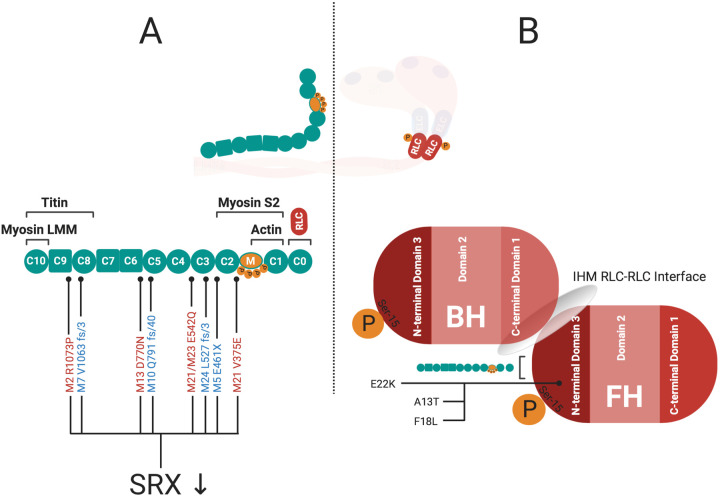Fig. 4.
The location and role of cMyBPC and cRLC mutations in HCM Pathogenicity. (A) Truncating (blue) and missense (red) mutations in cMyBPC have been linked to HCM and also shown to reduce SRX proportions in the cardiac muscle (McNamara et al., 2017). It isn't clear how many of the missense variants in MYBPC3 could alter SRX. The cardiac specific CO domain of cMyBPC serves as a binding site for the N-terminal domain 3 of cRLC (Ratti, 2009). (B) The N-terminal domain 3 of cRLC itself contains the regulating phosphorylation site (Toepfer et al., 2013), functions as IHM RLC-RLC interface (Alamo et al., 2016), and has been shown to harbour HCM-related mutations (A13T, F18L, E22K) (Farman et al., 2014; Szczesna-Cordary et al., 2005), where the RLC E22K mutation in particular has been hypothesized to destabilize myosin SRX (Alamo et al., 2017).

